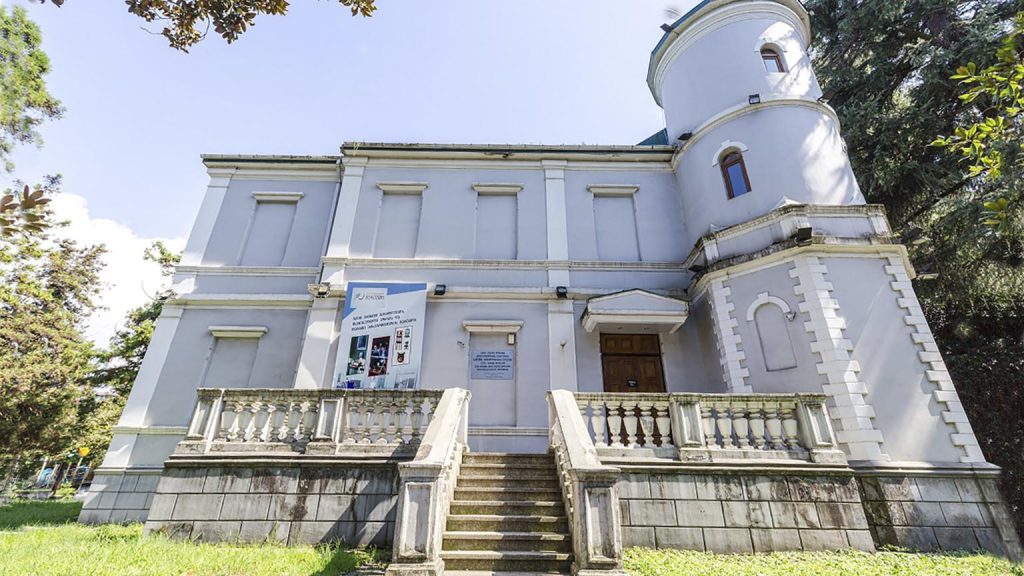Explore Georgia museums
BATUMI MUSEUMS
STATE ART MUSEUM OF ADJARA

The museum keeps about 400 exhibits, paintings by well-known Georgian and foreign artists (Niko Pirosmani, D. Kakabadze, L. Gudiashvili, E. Akhvlediani, S. Bakalovich, Zomer, A. Terni, R. Petviashvili, N. Ignatov, A. Zankovski), G. Tsereteli, etc), Graphic (N. Churghulia, L. Zambakhidze etc) Paintings, ceramics, wood, glass, stamping, tapestry, sculpture( E. Fantareli, G. Ochiauri etc).
State art museum of Adjara was officially opened on December 19, 1998 and it is an important center of modern Georgian culture. The museum holds a solid collection of exhibits that give a vivid representation of the main stages of 20th century Georgian visual art. The whole range of wonderful artists of different generations is represented here.
• Location: 8, Gorgiladze str., Batumi
• Opening hours: 10 Am-6 Pm (Always open)
BATUMI ARCHAEOLOGICAL MUSEUM

Batumi Archaeological museum is one of the significant scientific,educational and cultural centres of our country.The building which has being housing the museum since 1994 belongs to architectural monuments in the midst of the 20th century.
The ancient exhibits are represented by stone tools found in mountain Adjara, Beshumi resort, and dated to 300-400 000BC.The exhibition shows that our region belongs to those hearts of the world civilization,where transition from the economy based on hunter-gathering and fishing to a manufacturing economy took place about 10000 years ago.The next periods of development –the Eneolithic-Early Bronze ages(5th-3th millennia BC),especially the Late Bronze and Early Iron ages ,are represented by rich and diverse museum pieces.The Chorokhi river basin is identified as one of the ancient centres of metallurgy,which in the 2nd millennium BC turned to be the cradle of the western Georgian(Colchian) tribal culture.The ancient Greek myth of the Argonauts was associated with this place.
• Location: 77 Chavchavadze St, Batumi
• Opening hours: 10 Am-6 Pm (Always open)
KHARITON AKHVLEDIANI ADJARA STATE MUSEUM

Khariton Akhvlediani Adjara State Museum in Batumi, Georgia is a one-stop discovery of the history and nature of Adjara Region. With more than 180 thousand exhibits including rare and ancient artifacts, old photographs, works of art and more, both children and adults are sure to find its diverse collections to be interesting and informative.
The museum was founded in 1908, and since 2005 has been named after Khariton Akhvlediani, a historian from Adjara who served as director of the museum from 1939-1987. Akhvlediani was known for organizing scientific expeditions and for amassing valuable items and manuscripts in the museum storehouse. As a result of his efforts, many young people in the area have been inspired to study archeology.



Adjara State Museum consists of four sections on nature, archaeology, ethnography and history. The first department covers the geology, flora and fauna of Adjara past and present, while the final three sections relay the development of the region and of Georgia as a whole from its earliest days up until the present. Housed in Khariton Akhvlediani Adjara State Museum is a special collection of archaeological findings from the 12th century BC to the 2nd century AD, including everything from engraved axes and a bronze ram to belt fragments and a brooch.
In 1937, a scientific library opened in the museum which now contains some 65 thousand printed books and magazines, including 2500 copies of rare writings in the Georgian, Russian, Arabic, Armenian, Greek and Persian languages.
• Location: 4 Khariton Akhvlediani St, Batumi
• Opening hours: 10 Am-6 Pm (Always open)
NOBEL BROTHER’S BATUMI TECHNOLOGICAL MUSEUM

The Black Sea town of Batumi in Georgia developed quickly in the late 19th century as a consequence of joint infrastructure investments by the oil barons Nobel, Rothschild, Samuel and Mantashev, encompassing a deepwater harbour and a railway from Baku that soon carried one-fifth of the world’s oil production. A pipeline and refinery built by Ludvig Nobel then followed.
In the late 19th century, the brothers Ludvig and Robert Nobel bought a plot of land and built themselves a house in Batumi to mind their expanding operations. They also influenced the Swedish government to install a Consultate in Batumi in 1888.
The old Nobel house still exists, and was restored and converted into a museum in 2007 following a decision by the Georgian President. The museum has 153 items.
• Location: 3A Leselidze street, King Tamar settlement. Batumi, Georgia
• Opening hours: 10 Am-6 Pm (Always open)
MEMED ABASHIDZE HOUSE-MUSEUM

Memed Abashidze is a Georgian public figure, writer and publicist. You will be able to get acquainted with his memorial items and biography in the museum. Memed Abashidze was born in 1873 in Batumi. He started working in the early XX century and systematically published publicist letters in the Georgian press. He also actively fought for the national self-consciousness of Muslim Georgians and for the unity of Georgia, for which he was arrested and deported several times. Memed Abashidze headed the Georgian Muslim Charitable Society. He spoke Arabic, Persian and Turkish and translated works by Omar Khayyam and Namik Kemal into Georgian. Memed Abashidze Street exists in Batumi and Tbilisi.
• Location: 9 Memed Abashidze Ave, Batumi
• Opening hours: 10 Am-5 Pm (Closed Sunday-Monday)
